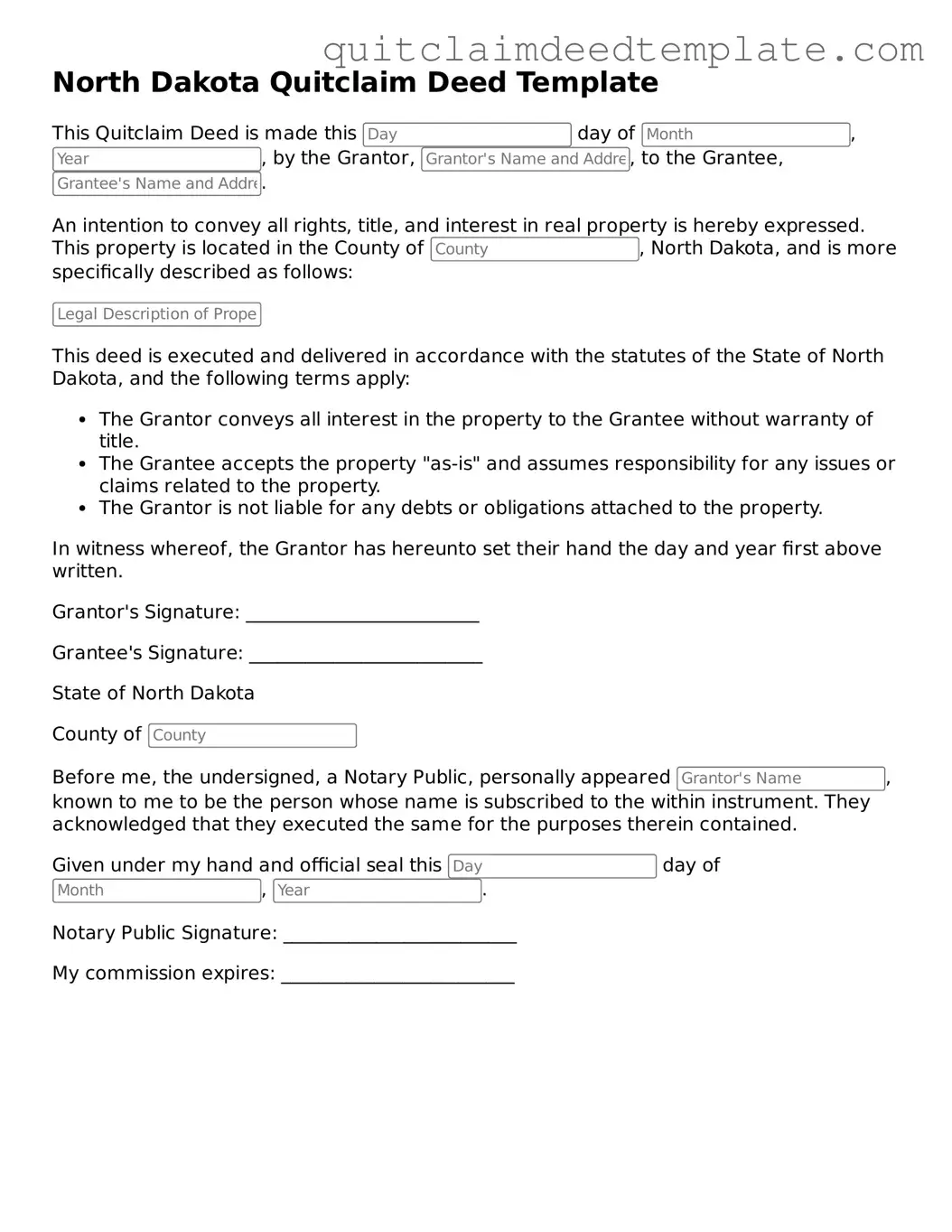Documents used along the form
The North Dakota Quitclaim Deed form is commonly used for transferring property ownership. However, several other documents often accompany this deed to ensure a smooth transaction and proper record-keeping. Below are four such forms and documents that may be required in conjunction with the Quitclaim Deed.
- Property Transfer Affidavit: This document provides details about the property being transferred, including its value and any existing liens. It is often required by the county for tax assessment purposes.
- Title Search Report: A title search report confirms the current ownership and any encumbrances on the property. This report helps ensure that the seller has the legal right to transfer the property.
- Real Estate Purchase Agreement: This contract outlines the terms of the sale between the buyer and seller. It includes the purchase price, closing date, and any contingencies that must be met before the sale is finalized.
- Affidavit of Identity: This document verifies the identity of the parties involved in the transaction. It helps prevent fraud and ensures that the correct individuals are executing the deed.
These accompanying documents play an essential role in the property transfer process. They help clarify the terms of the transaction and protect the interests of all parties involved.
